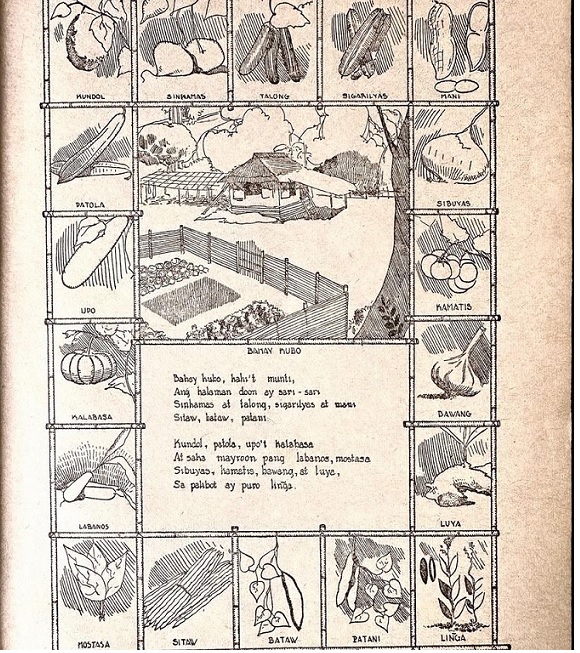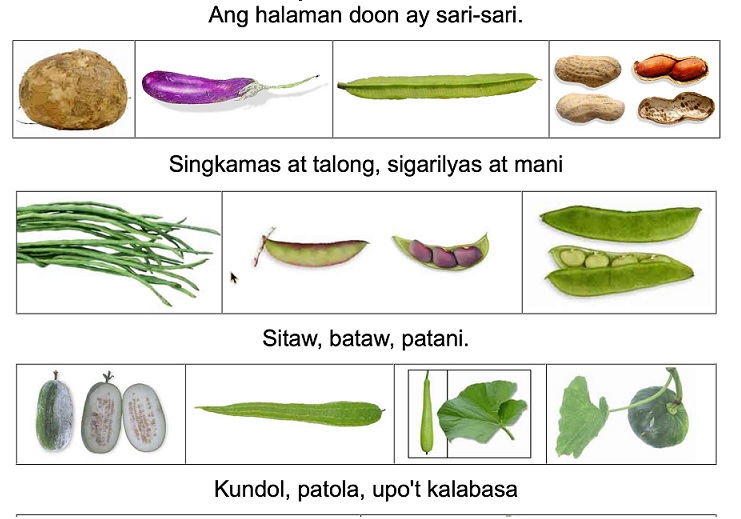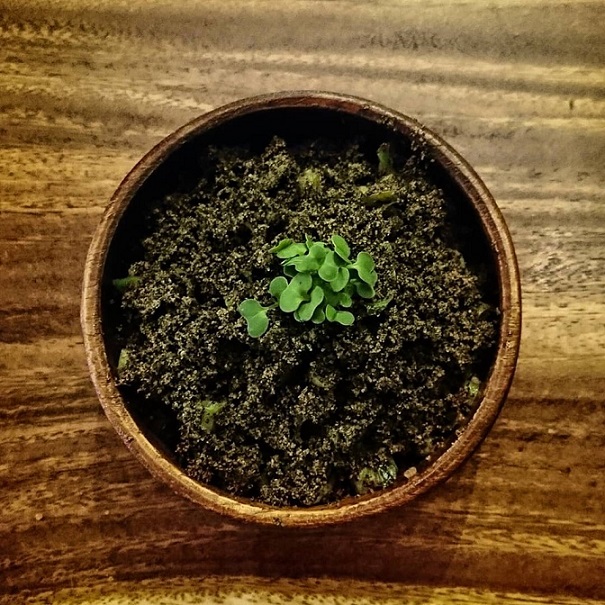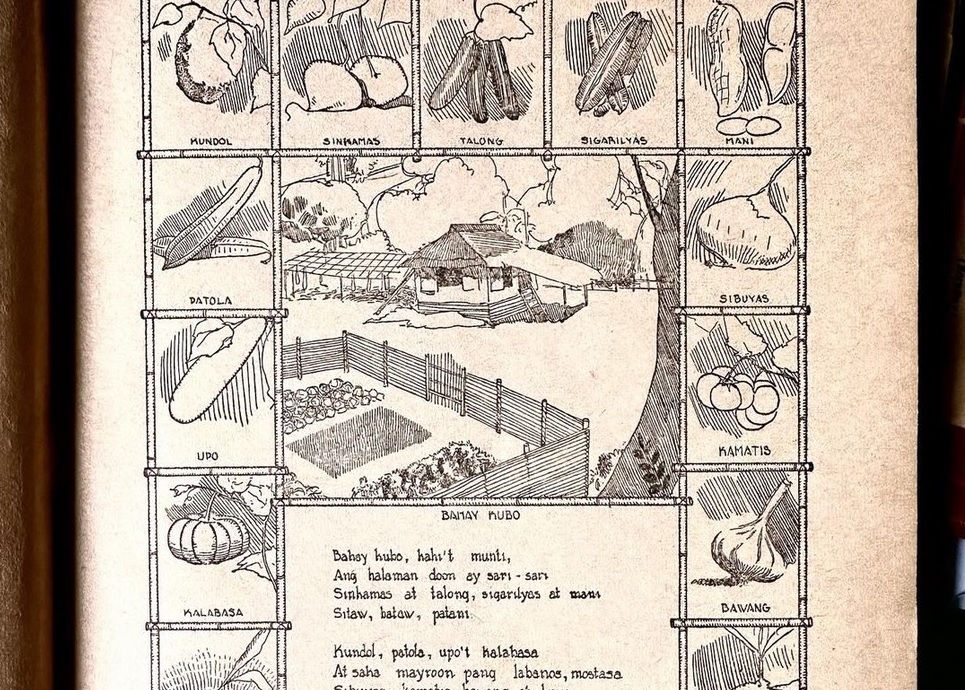Most Filipinos are familiar with the Tagalog folk song Bahay Kubo that describes a humble nipa hut with a backyard garden planted with 18 vegetables. Native vegetables? No, they came from all over the world.

In a tropical country like the Philippines where vegetables are so easy to grow, how much vegetables do Filipinos consume every day? A Filipino family consumes only 60 kilos of vegetables annually, compared to the average 120 kilos in other countries.
Veggie consumption
Filipino adults consume 58 grams or less than one cup of green leafy and nonleafy vegetables and 17 grams or less than 1⁄4 of a small-sized fruit daily, according to the 2021 Expanded National Nutrition Survey-DOST-FNRI.
It is far below the World Health Organization and Food and Agriculture Organization recommendations of consuming at least 400g or at least five servings of combined fruits and vegetables.
In addition, a UNICEF report (2023) of Filipino children’s ‘lived experience’ of their food environment observes that Filipino children are eating fewer fruits and vegetables, and more sugar, salty and fatty products. Three quarters or 74 percent of 13-15-year-old children eat less than three portions of vegetables per day; more than one third drink at least one carbonated drink per day.
Poor diets contribute to the burden of malnutrition, stunting, and increasing rates of obesity among Filipino children.

“Bahay Kubo” greens
As introduced species, “Bahay Kubo” vegetables have become naturalized, thriving in the country’s tropical climate. Here are some of them:
Talong (Eggplant): There is still no consensus as to its place of origin; it has been described as native to South Asia where it grows wild. Called berenjena in Spanish colonial times, traceable to the Arabic badinjan, to the Persian badenjan, or further back, the Sanskrit vatriga-gama. It is terung in Bahasa Indonesia.
The Franciscan missionary Pedro San Buenaventura in his Vocabulario Lengua de Tagala (1613), the earliest Tagalog dictionary, had noted that Tagalogs were using the word talong for berengena.
Mostly of the long and slender variety, eggplants are used in stews or vegetable dishes such as pinakbet; it is also grilled and serve as a salad, or grilled then panfried with eggs as omelet.
Sitaw (Long Bean), Bataw (Hyacinth Bean), Patani (Lima Bean): Think of sitaw at kalabasa thickened with coconut milk, or in pinakbet, laswa, or bulanglang with all the backyard vegetables; sitaw and talong in the quintessential sinigang. Bataw or lablab, a greenish bean pod with purple tinge is used in pinakbet or cooked in coconut milk.
Sinkamas (Jicama or Mexican turnip): A native Mexican vine, its Filipino name comes from the original Nahuatl name “xicamatl” or “jicama” in Spanish. Spain introduced it into Asia in the 17th century.
It is eaten raw with salt or vinegar, most refreshing in summer. It is also used as extenders in making siomai and meatballs.
Luya (Ginger): Antonio Pigafetta, Magellan’s chronicler, gave the first written account of food eaten in the Philippines and described a pork dish sprinkled with fresh ginger. Salabat or ginger tea is a herbal drink, best served in the cold months of December and January.
Sigarilyas (Winged Bean): Called balagay in Iloilo, it is cooked with kadyos and malunggay, or added as laswa or vegetable stew.

Kalabasa (Squash): A wild plant from Mexico and Central America, It comes from askutasquash (a green thing eaten raw) of the Narragansett language of Native Americans.
Early Visayan terms for squash include tabagoang (wild), tabiayong (made into conserves), or tabogoc (small, wild) as described by Fr. Alonso Mentrida in his 1841 Hiligaynon and Kiniray-a dictionary.
Sibuyas (Onion): Sibuyas is the Filipinized version of the Spanish word cebolla. In early Philippine dictionaries, sibuyas was called lacon, lasona, or laso, referring to the thumb-sized shallot.
Often used in Tagalog cooking as part of sautéing, with onions, garlic and tomatoes.
Out of Africa: The four vegetables, upo (bottle gourd), bataw (Hyacinth bean), patola (sponge gourd) and linga (sesame) have their native origins in Africa. The gourds are cooked in soup dishes such as tinola, or used in pancit.
Paying homage
One Philippine restaurant that has won recently the Flor de Caña Sustainable Restaurant 2023, and designated as one Asia’s 50 Best Restaurants in 2018, Toyo Eatery pays homage to “Bahay Kubo” by using all 18 vegetables in one dish, named Garden Vegetables. Chef Jordy Navarro notes, “We’ve put all the vegetables in one plate….. and because of the use of local ingredients, we feel the terroir of vegetables really gives that local flavour profile.”

A connected world
Stephen B. Acabado, an anthropology professor of University of California, Los Angeles, observes that the “Bahay Kubo” song provides a window to the country’s connection to the world. He says that it is “a great example of the Homogenocene, the widespread expansion of plants (and animals) brought by maritime exchanges” when Christopher Columbus explored the Americas.
“As such, the quintessential Philippine garden is a product of global connections that started more than a thousand years ago.”

